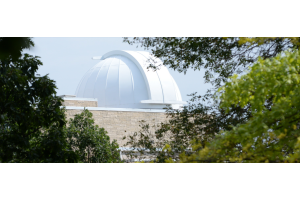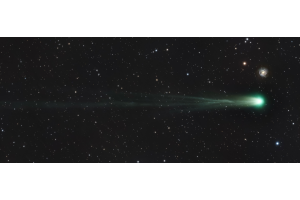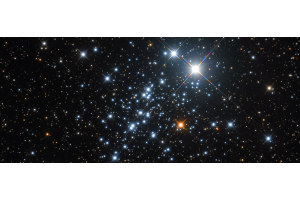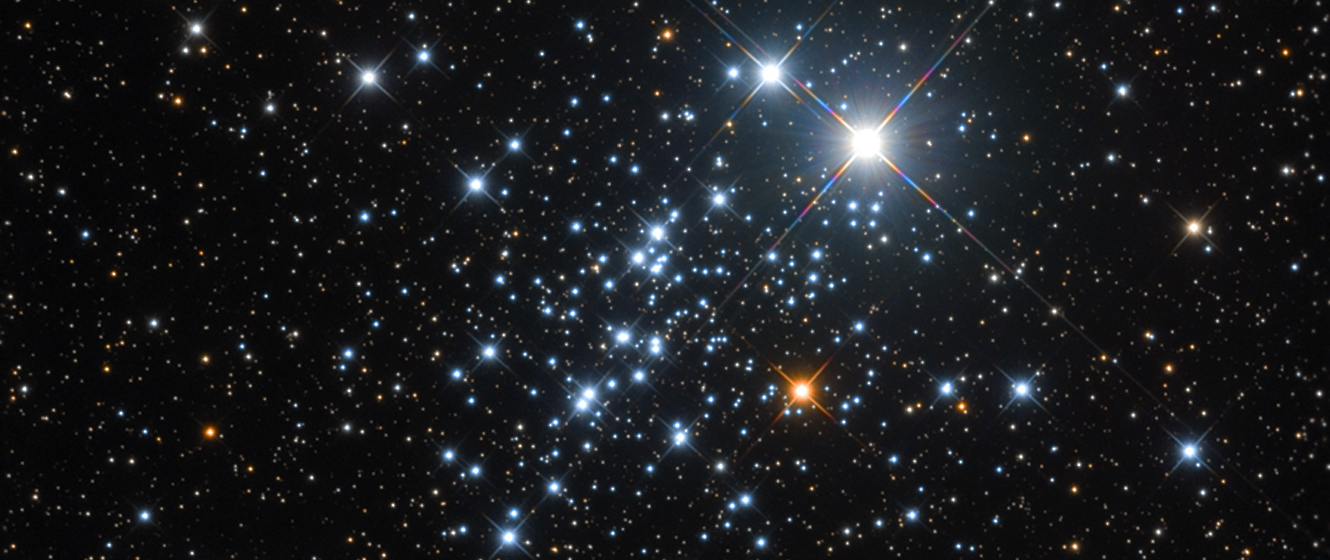
In this episode of What's in the Sky this Month, Teagan reviews some of the beautiful celestial objects you can see in the month of October 2025!
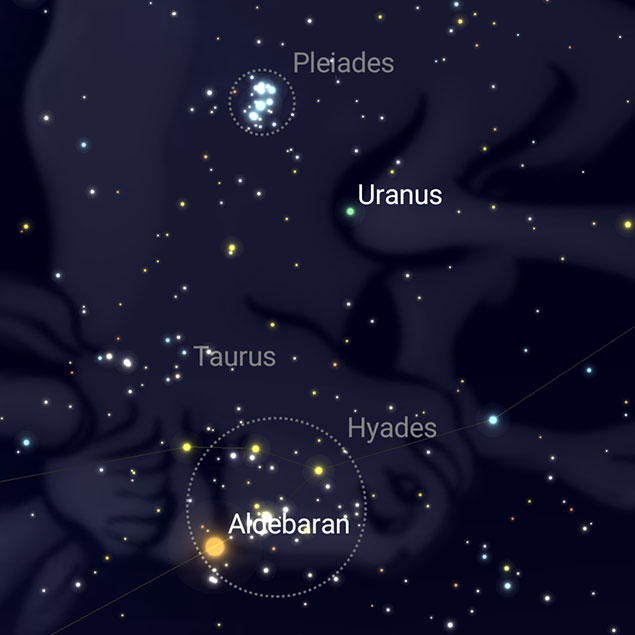
Image credit: SkySafari
Uranus & the Pleiades
Uranus takes 84 years to orbit the Sun, and hence, we currently have a once-in-a-lifetime opportunity to see the planet close to the Pleiades. This time around, the planet and cluster occupy the same 10x50 binocular field of view from mid-April 2025 to mid-August 2026, and then again (but with a slightly wider separation) between mid-October 2026 and late May 2027.
On July 15th this year, 4 degrees, 15 arcminutes, and 46.3 arcseconds separated the pair, but their proximity to the Sun made observations difficult. This month, on the 30th, the gap between the pair will be marginally wider - 4 degrees, 15 arcminutes, and 48.3 arcseconds - giving us a second opportunity to see them together. This will be your best chance this year; 4 degrees, 13 arcminutes, and 6.6 arcseconds separate them on May 1st next year, but with the Sun 19 degrees away, it’s unlikely you’ll be able to see them both.
OUR NEAREST NEIGHBORS
Mars can be found clinging to the west-southwestern horizon this month, and is joined by Mercury from mid-month onwards. Two degrees will separate them on the 18th and 19th, with Mercury, the brighter of the two, just six degrees above the horizon at around 15 minutes after sunset. Look for a thin, two-day-old Moon to their left on the 23rd. The gap between Saturn and Neptune widens from three to four degrees this month, but both remain in an excellent position for observation throughout the night. An almost full Moon hangs nearby on the 5th. Uranus is observable from late evening, just 4.3 degrees from the Pleiades (see above). Jupiter is closest to Pollux in Gemini from the 10th to the 15th, when it passes 6 degrees and 38 arcseconds south of the star. The last quarter Moon appears close to Castor, Pollux, and Jupiter in the early hours of the 13th and 14th. Venus continues to lose ground against the Sun but can still be seen shortly before dawn in the east, with a waning crescent Moon to its upper right on the 19th. There’s a full Harvest Moon (see below) in Pisces on the 6th, with a new Moon occurring on the 21st.
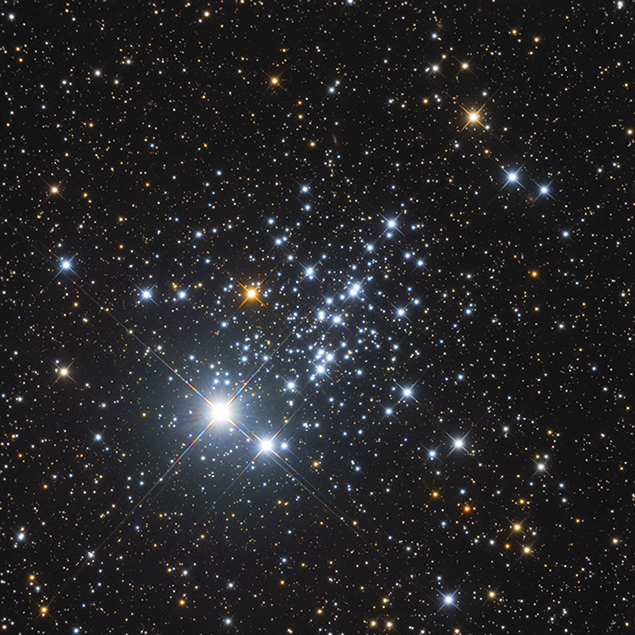
Image credit: Leonardo Orazi
NGC 457 - The Owl Cluster
A fine cluster for both small telescopes and astrophotographers, a low magnification will show Phi Cassiopeiae, the double star that gives the owl its eyes. The remaining, fainter stars outline the bird’s body and wings, with the stars appearing densest in its chest area.
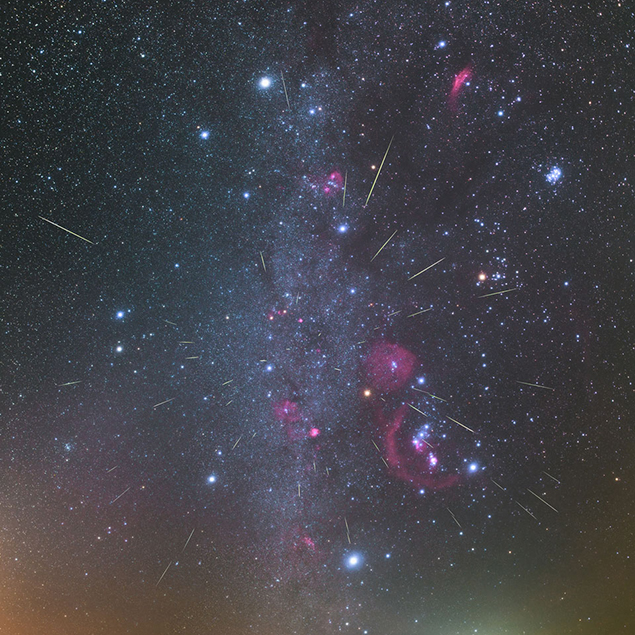
Image credit: Yin Hao
The Orionid Meteor Shower
While not as spectacular as the Perseid or Geminid meteor showers, the Orionids can be relied upon to produce 20 shooting stars an hour under ideal conditions. The shower’s peak occurs on October 21st, when the Moon is new, giving observers good odds this year.
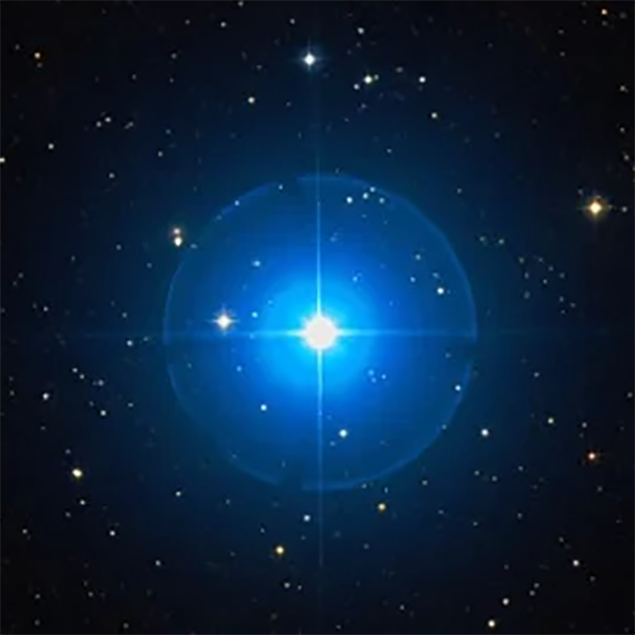
Image credit: Wikisky
Mesarthim (Gamma Arietis)
An easy double for almost any telescope, a magnification of 35x will barely split Mesarthim into two white stars of nearly equal brightness, with the best views coming with a magnification of around 100x.

Image credit: NASA, ESA, and A. Hajian
NGC 7662 - The Blue Snowball Nebula
The Blue Snowball is a fine example of how planetary nebulae got their name. A magnification of just under 100x shows a small, circular, slightly blue disc - much like a planet. Increasing the magnification to over 200x will show rings of blue and green surrounding the darker center.
STELLAR CONCEPTS
Harvest Moon: If you think September’s full Moon is the Harvest Moon, you’d only be partially correct. The Harvest Moon is actually the full Moon that occurs closest to the autumnal equinox. This year, with full Moons on September 7th and October 6th, the Harvest Moon occurs in October. The next October Harvest Moon will occur on October 3rd, 2028.






